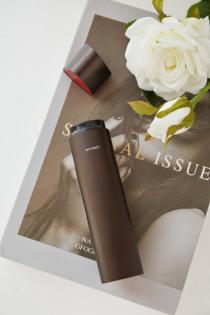Sound Advice: Warming up to RF skin tightening and good amplifier-speaker combos
Published in Tech Advice
Q. I have seen you write about RF skin tightening before. Is there a certain age you should start or stop using it? What do you recommend?
—L.L., Kansas City, Missouri
A. RF skin tightening machines use radio-frequency energy to heat underneath the surface of the skin, stimulating the production of collagen and elastin to tighten sagging skin and smooth over wrinkles, providing a modest, natural face-lift without surgery. I started in my mid-50s and saw a noticeable difference within three weeks. RF skin tightening is proven clinically effective and besides the older population, it has also caught on with the 30- to 40-year-old age bracket for the cosmetic and rejuvenating effects.
The skin’s ability to make elastin and collagen decreases with age, even with an RF machine. The most effective age range for use is between 30 and 65, with effectiveness falling off gradually afterwards. By the time you are 75 the machines are not as effective as you have lost a lot of elastin and collagen by then. It is best to start earlier if possible to build a base, which may help later.
Quality RF machines tend to be expensive, but deals on health and beauty products are often found in the springtime and that is the case this year. Amiro is the industry leader and besides my own positive experience, they have received praise from publications such as Forbes, Elle, Cosmopolitan and Harper’s Bazaar. Using $60 coupon code AMIRO60 at amirobeauty.com reduces the bestselling $439 R1 Pro from the $259 sale price to $199. The code works with the more expensive R3 Turbo models as well. The R1 Pro and R3 Turbo have multiple modes and incorporate red light therapy, but the R3 Turbo has an additional mode and requires less time to apply. The R3 Turbo is tempting, but the idea of getting a high-end RF machine for under $200 is very appealing as well. Delivery is free but takes about two weeks.
Q. I have an all-in-one stereo that includes a CD player and a cassette player. It has finally died and I'm wondering if the TEAC AD-850-SE might be a good replacement to play my cassettes and CDs. Could you perhaps say a few words about reasonably priced integrated amplifiers and bookshelf speakers to use with the TEAC?
—B.A., Apple Valley, Minnesota
A. “Reasonably priced” can mean a lot of things in the audio world! I just got back from the AXPONA show in Chicago, where million-dollar stereos were found in abundance. That said, I think I know what you are looking for, especially given your previous unit and the TEAC’s $549 price. Here are two speaker-amplifier pairings around $500 and $1,000 that would be a great match to the TEAC CD/cassette combo. Add $15 for a spool of 16-gauge speaker wire to connect the amplifier and speakers and you are all set.
For $528.98 you can get a $299 Cambridge Audio AXA25 amplifier and $229.98/pair Elac Debut 2.0 speakers. The speakers are currently on sale on Amazon, reduced from $329.98. cambridgeaudio.com and elac.com.
One of my favorite bookshelf speakers under $1,000 is the SVS Prime Bookshelf, which is $599.98/pair in black ash finish. The sound is very clear, precise and open, with excellent tonality, a tight, controlled midrange and abundant detail throughout the audible range. Despite their precision the Prime Bookshelf does not sound at all cold or clinical, and the sound is very engaging. Pair them with an NAD C316BEE V2 amplifier (currently $399, on sale from $499) for beautiful sound for under $1,000. svsound.com and nadelectronics.com.
———
©2024 Tribune Content Agency, LLC







Comments